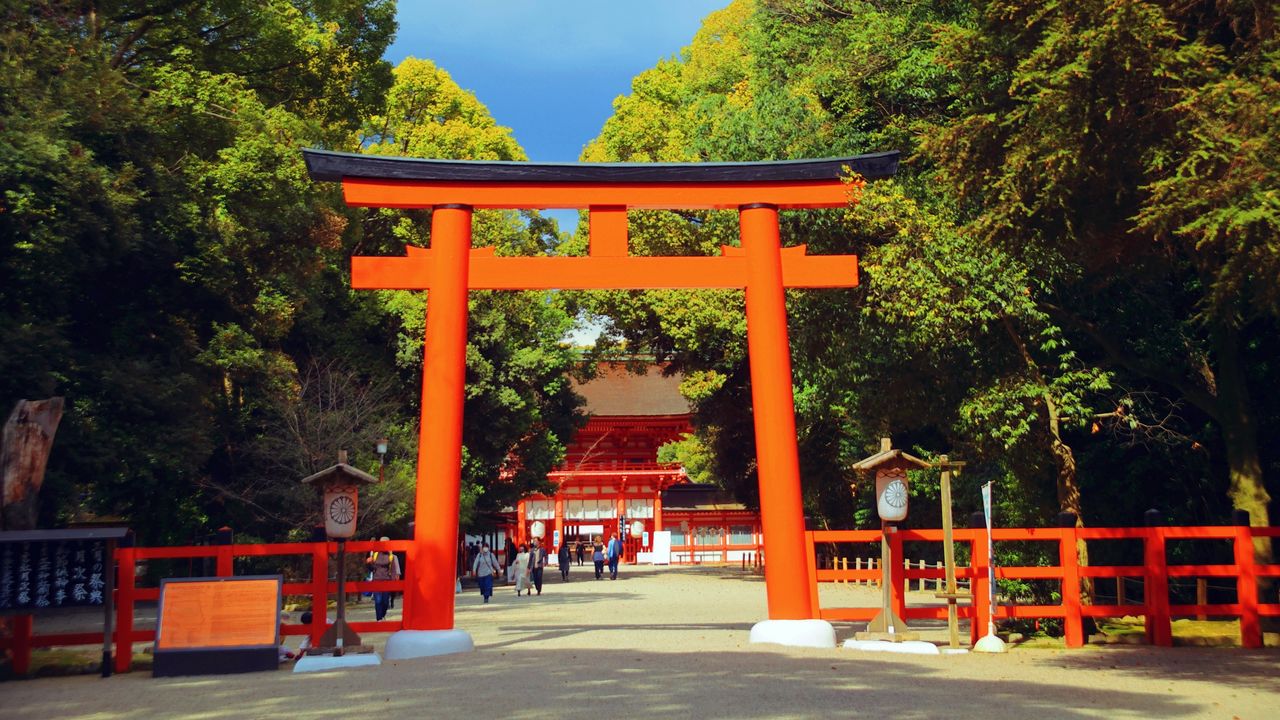
A Visit to Shimogamo Jinja, Kyoto’s Oldest Shintō Shrine
Guideto Japan
Travel Culture History- English
- 日本語
- 简体字
- 繁體字
- Français
- Español
- العربية
- Русский
Aoi Matsuri: the Grand Festival of Kyoto’s Oldest Shrine
The Aoi Matsuri, along with the Gion Matsuri and the Jidai Matsuri, is one of Kyoto’s three most important festivals. This event, the annual festival of the Shimogamo and Kamigamo shrines, has taken place for 1,500 years and enjoys special prestige, as imperial messengers have been dispatched to the shrines since the Heian period (794–1185). Held yearly on May 15, the festival features a procession from the Kyoto Imperial Palace to the shrines of colorful floats and carts accompanying the saiō-dai, the festival’s principal figure, and a retinue of 500 people in Heian period court dress.
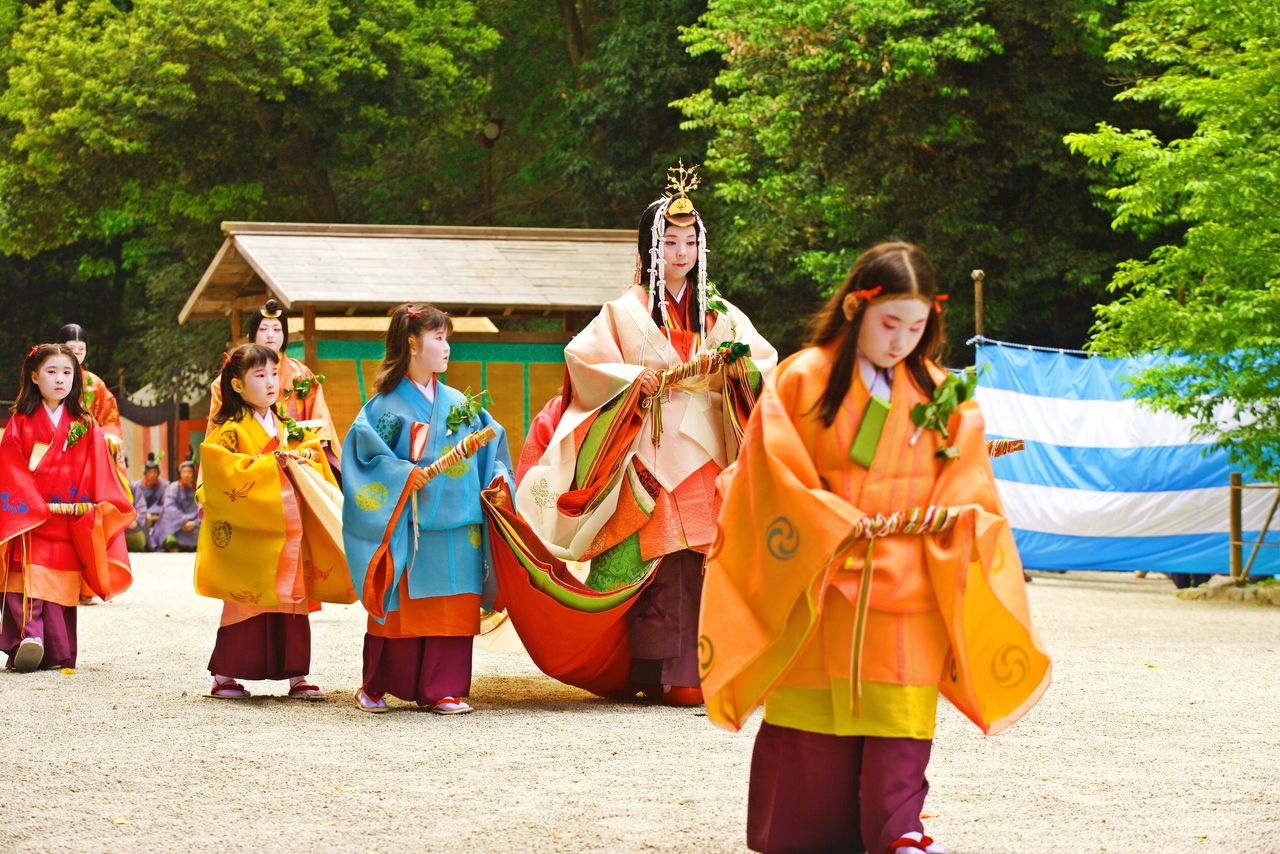
Imperial princesses dedicated to the shrine were called saiō. Nowadays, a woman with the title of saiō-dai participates in the procession as their representative. (© Edit Plus)
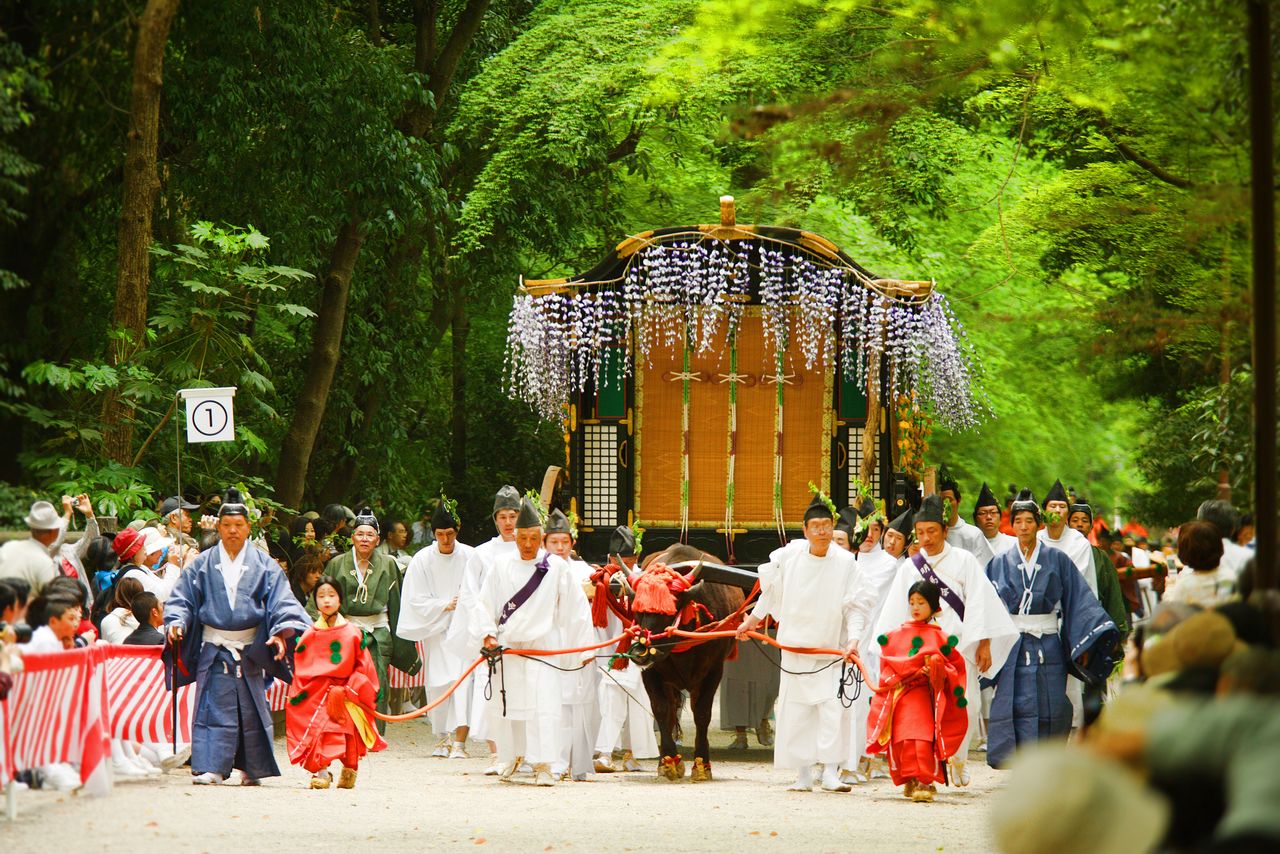
Twigs from katsura trees and heart-shaped leaves of the futaba-aoi decorate the hair of the saiō-dai and the clothing of procession participants. Paid spectator seating is available along the procession route at the Kyoto Imperial Palace and the approach to the shrines. (© Edit Plus)
Kamosha, as the Shimogamo and Kamigamo shrines are collectively known, were the tutelary shrines of the noble Kamo clan, who lived in the Kamo River delta. Shimogamo, the shrine located downriver, enshrines the ancestors of the Kamo clan.
According to shrine records, Shimogamo was founded before the Christian era. Given that remains of a ritual site dating to the Jōmon period (ca. 10,000–300 BCE) were found in the Tadasu no Mori primeval forest within the shrine precincts, the shrine undoubtedly has a very long history as a place for sacred rituals. The entire area is a national historic site and is included among the Historic Monuments of Ancient Kyoto inscribed as a UNESCO World Heritage Site in 1994.
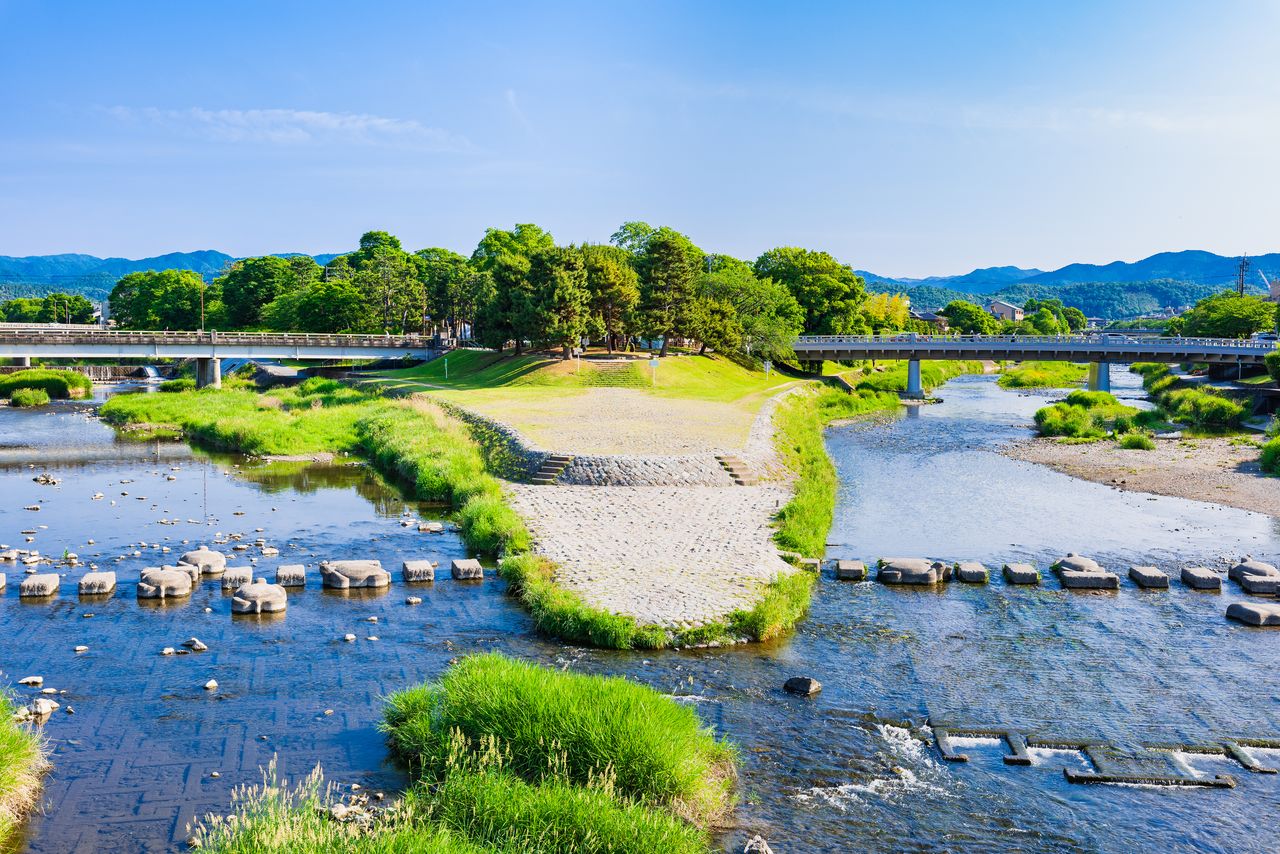
Shimogamo Shrine lies in a forest facing the Kamogawa delta at the confluence of the Kamo and Takano rivers. The bridge to the right leads to Demachiyanagi, the closest rail station. (© Pixta)
As one of Kyoto’s foremost shrines, Shimogamo Jinja has much to offer in terms of both interesting sights and divine favor. The shrine’s main deity, Kamotaketsunomi no Mikoto, is said to have shape-shifted into yatagarasu, a mythical, three-legged raven that guided Jinmu, the country’s first emperor, on his military expedition to Yamato (present-day Nara Prefecture) and protects against misfortunes and traffic accidents. Enshrined together with Kamotaketsunomi is his daughter Tamayorihime no Mikoto. She, in turn, is the mother of Kamowakeikazuchi no Mikoto, the deity enshrined at Kamigamo Shrine, and is associated with safe childbirth and children.
The sanctuaries to the two deities, erected side by side, are national treasures. The roofs covered in cypress bark shingles extend lower on the entrance side to form deep eaves, in the style of traditional shrine architecture. These structures, along with Ōidono, where ritual offerings to the gods are prepared, and others are not ordinarily open to the public but can be viewed from July to September 2023.
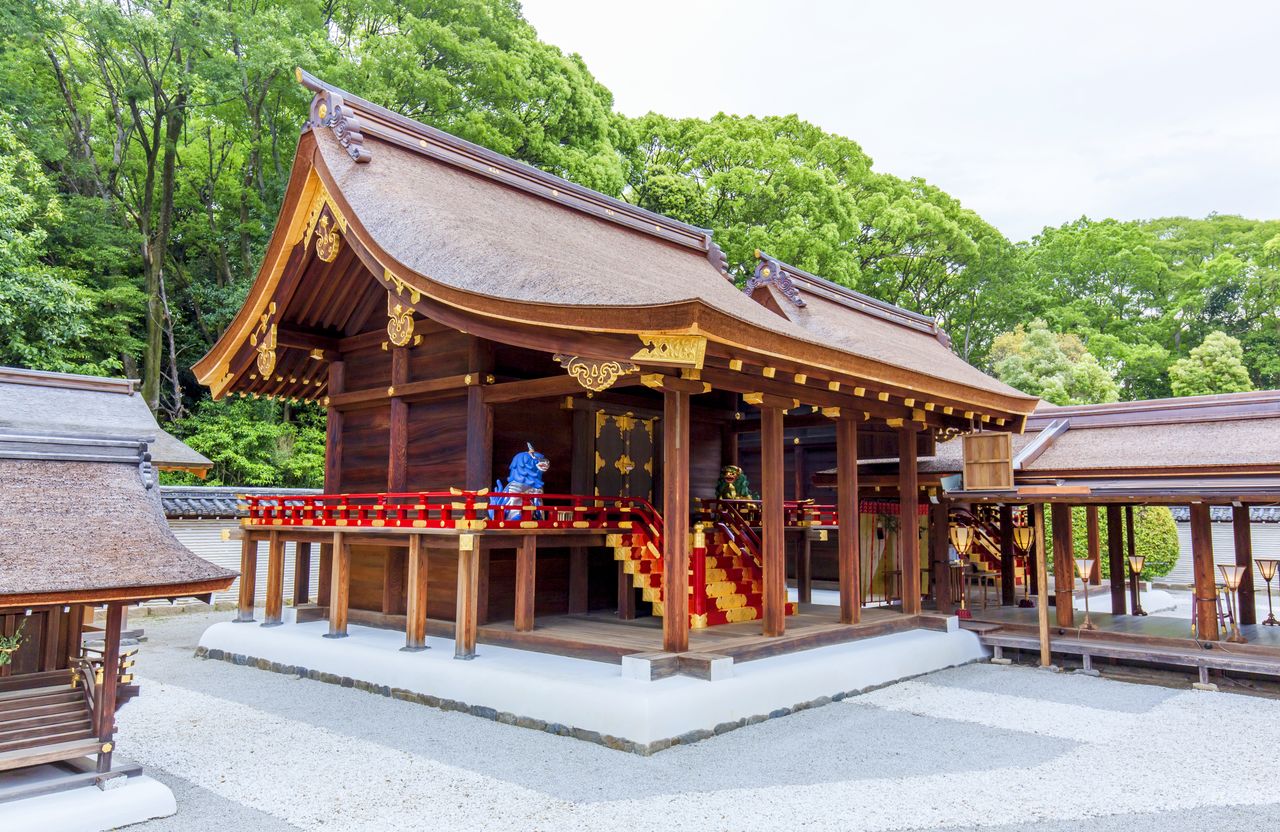
The West and East Sanctuaries, both designated national treasures, sit side by side. (© Edit Plus)
The shrine complex includes 53 structures designated important cultural properties. In addition to the main hall, the Rōmon gate and the Maidono, a kagura music and dance performance stage, are especially notable. Some of the worship halls are unusual in that their supporting pillars are set on stones above ground rather than being buried in the earth. This construction method was probably employed to make it easier to dismantle and refurbish the structures every 21 years when the ritual called shikinen sengū, practiced for over 10 centuries, took place.
The shrine’s precincts cover 124,000 square meters. The complex includes several auxiliary and subordinate shrines and is known as a power spot of spiritual significance for its many sacred trees and holy water. To enjoy the shrine’s benefits, visitors can buy popular amulets, fortune-telling papers, and other “lucky” accouterments.
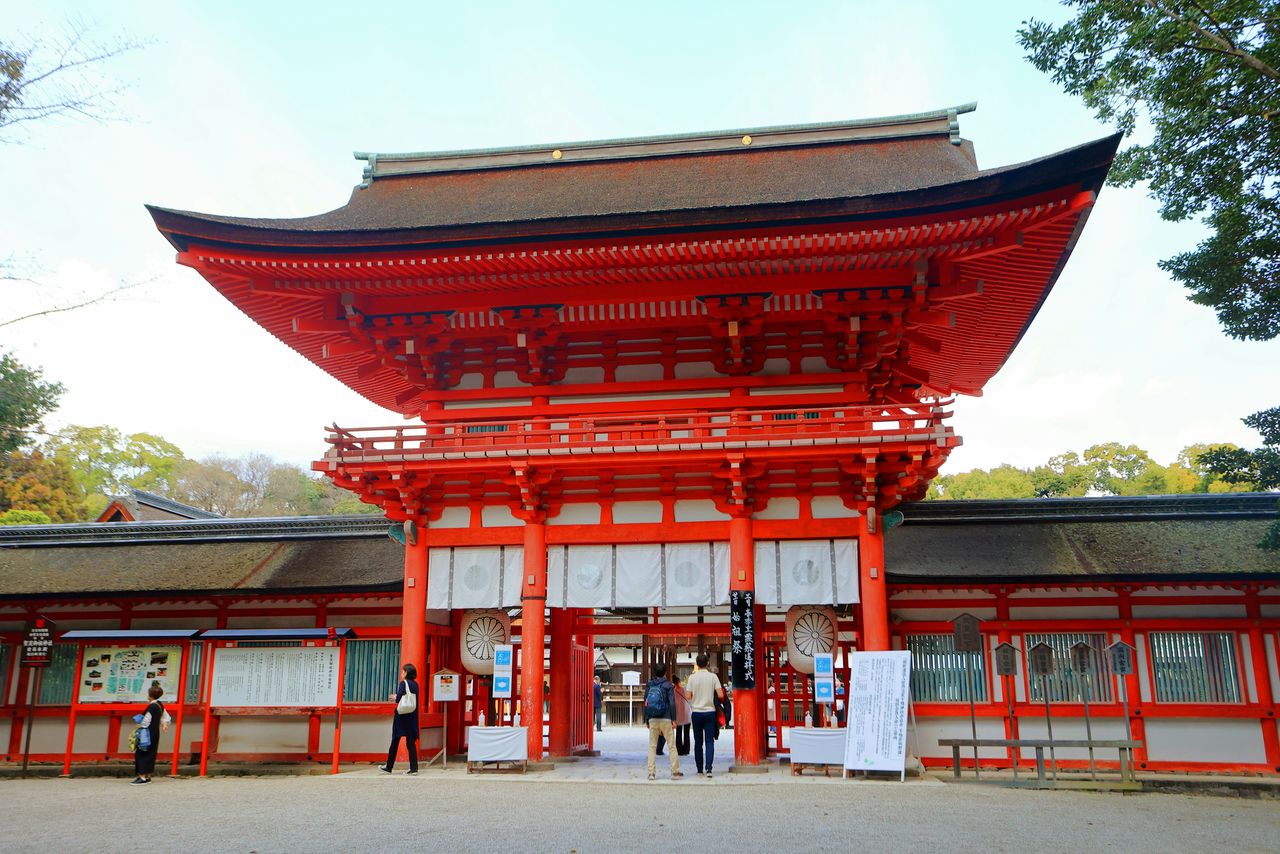
The shrine’s brilliant vermillion Rōmon two-storied gate stands 13 meters tall. (© Edit Plus)
The Kotosha Shrines
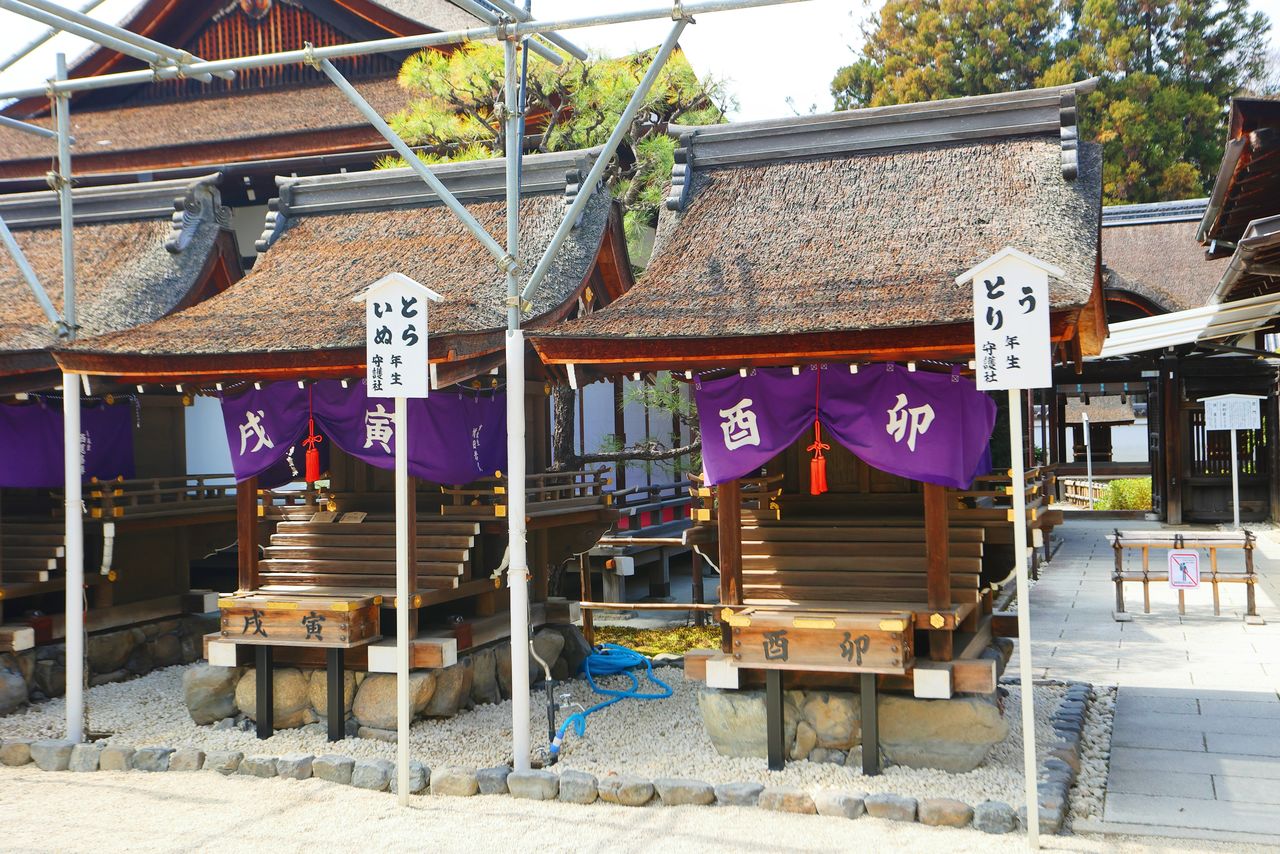
The Kotosha shrines are the protectors of the 12 signs of the Chinese zodiac. (© Edit Plus)
Seven Kotosha sanctuaries sit in a row in front of the main hall. The deities enshrined there are manifestations of founding deity Ōkuninushi no Mikoto under different names and are the protectors of one or two signs of the Chinese zodiac each.
Shrine Office
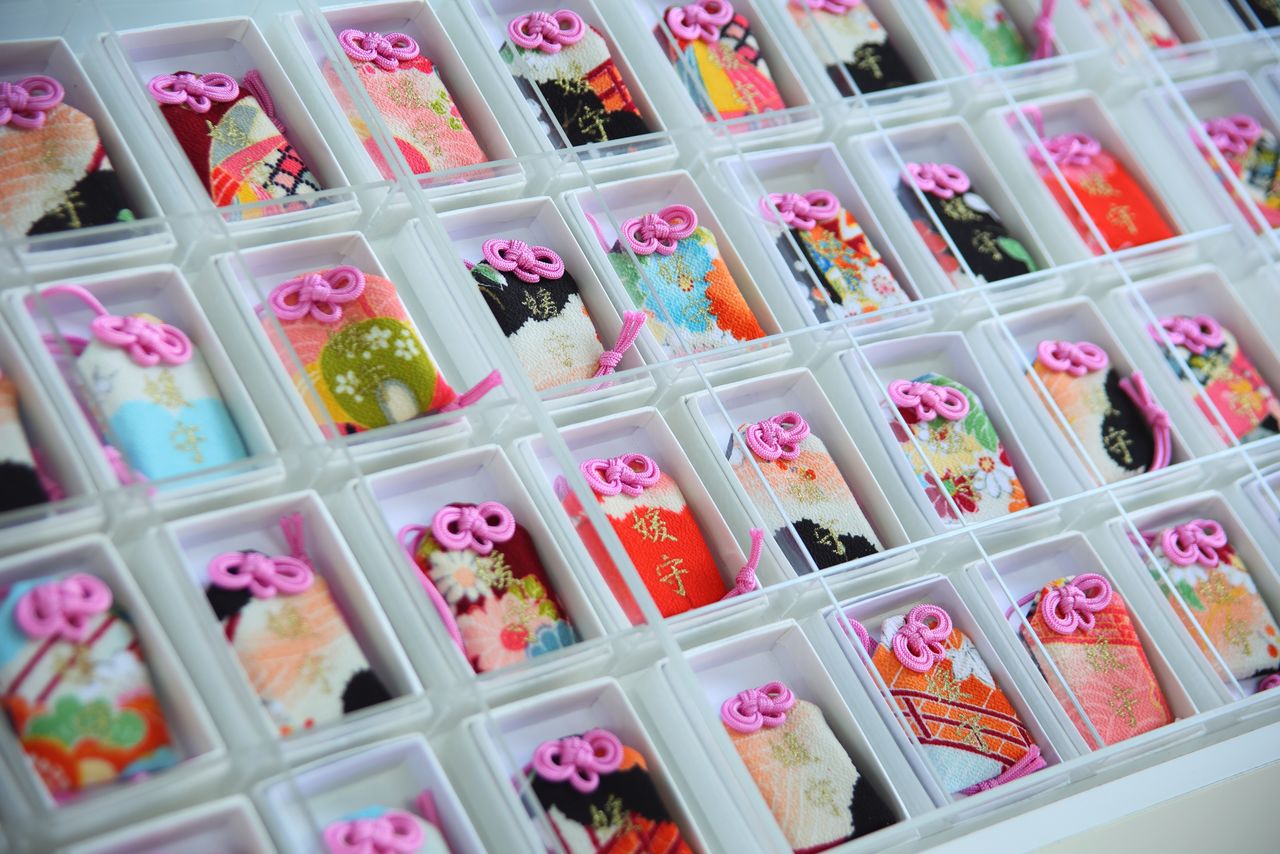
These amulets on sale at the main shrine office are all made from different-patterned fabrics. (© Edit Plus)
A fascinating variety of omamori amulets is sold at the largest shrine office, located to the left of the Chūmon gate. Omamori embroidered with silver thread or made from silk crepe, promising good fortune or making dreams come true, are especially popular with women. Others, made from denim, appeal to male visitors.
Inouesha
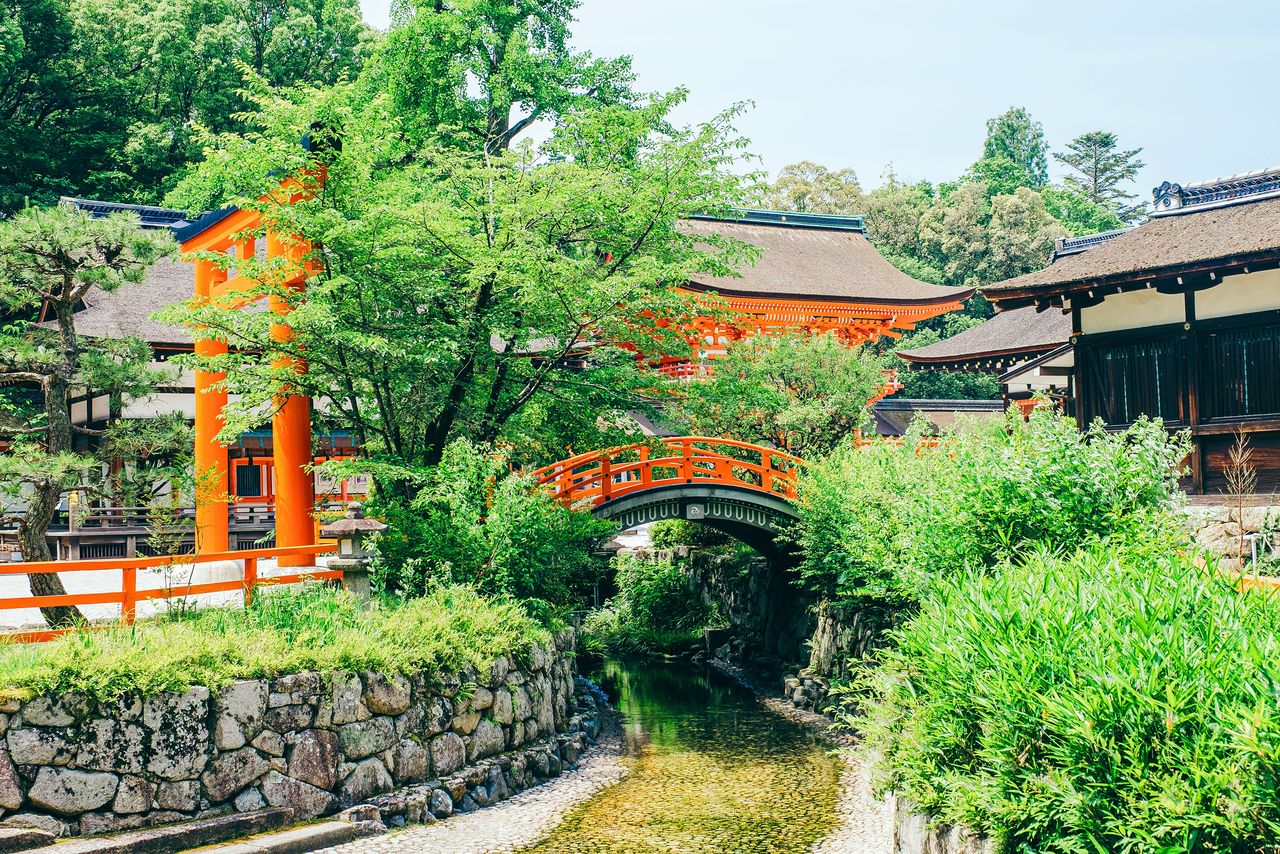
This vermillion arched bridge marks the site of Mitarashi Pond, to the right of the shrine’s main hall. (© Pixta)
Inouesha, east of the Chūmon gate, protects against disasters. There is a saying that anyone who dips their feet into Mitarashi Pond, which lies in front of this shrine, on the Day of the Ox in late July will be protected from epidemics. On this particular day, the shrine is thronged with people entering the pond in their bare feet. A shrine priest explains that this pond is also where the saiō-dai, the principal figure of the Aoi Matsuri, undergoes purification before the festival.
Incidentally, the popular mitarashi dango sweets originated at Shimagamo Jinja. These steamed rice dough balls in a sweetened sauce, served on skewers, were apparently inspired by the bubbles welling up from the spring that feeds Mitarashi Pond, from which they got their name. The original namesake of the treat can be enjoyed here to this day.
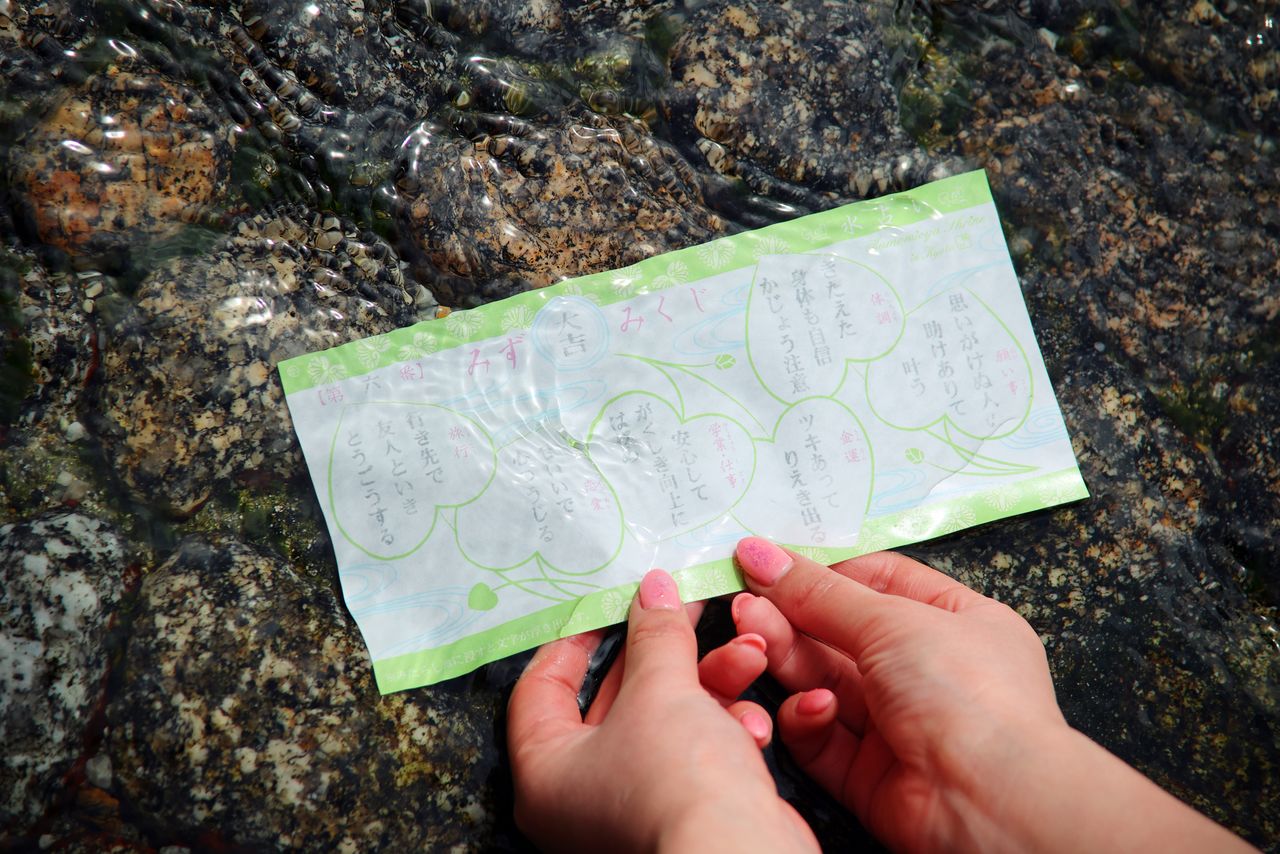
This special fortune-telling slip, sold at the Mitarashi shrine office, reveals its message when dipped in water. The paper is watermarked with the shrine’s futaba-aoi crest. What fortune will the water reveal? (© Edit Plus)
Aioisha
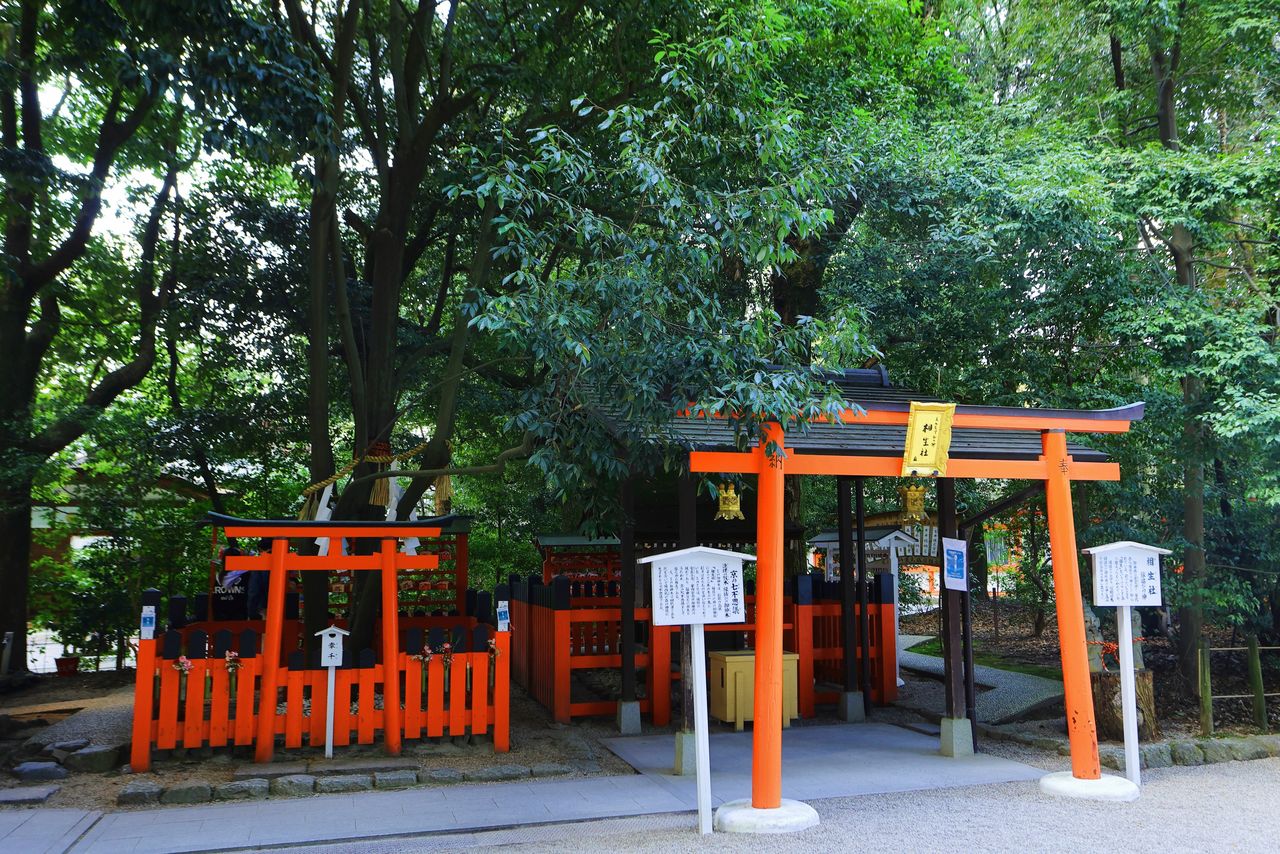
This shrine is popular among people seeking romantic relationships. Men and women offer ema votive tablets here in the hope of finding a compatible life partner. (© Edit Plus)
Subordinate shrine Aioisha, next to the Rōmon, enshrines the deity watching over romantic relationships, safe childbirth, child-rearing, and harmonious family relations. A sacred sakaki tree with two entwined trunks is popular among those seeking good vibes for finding a partner.
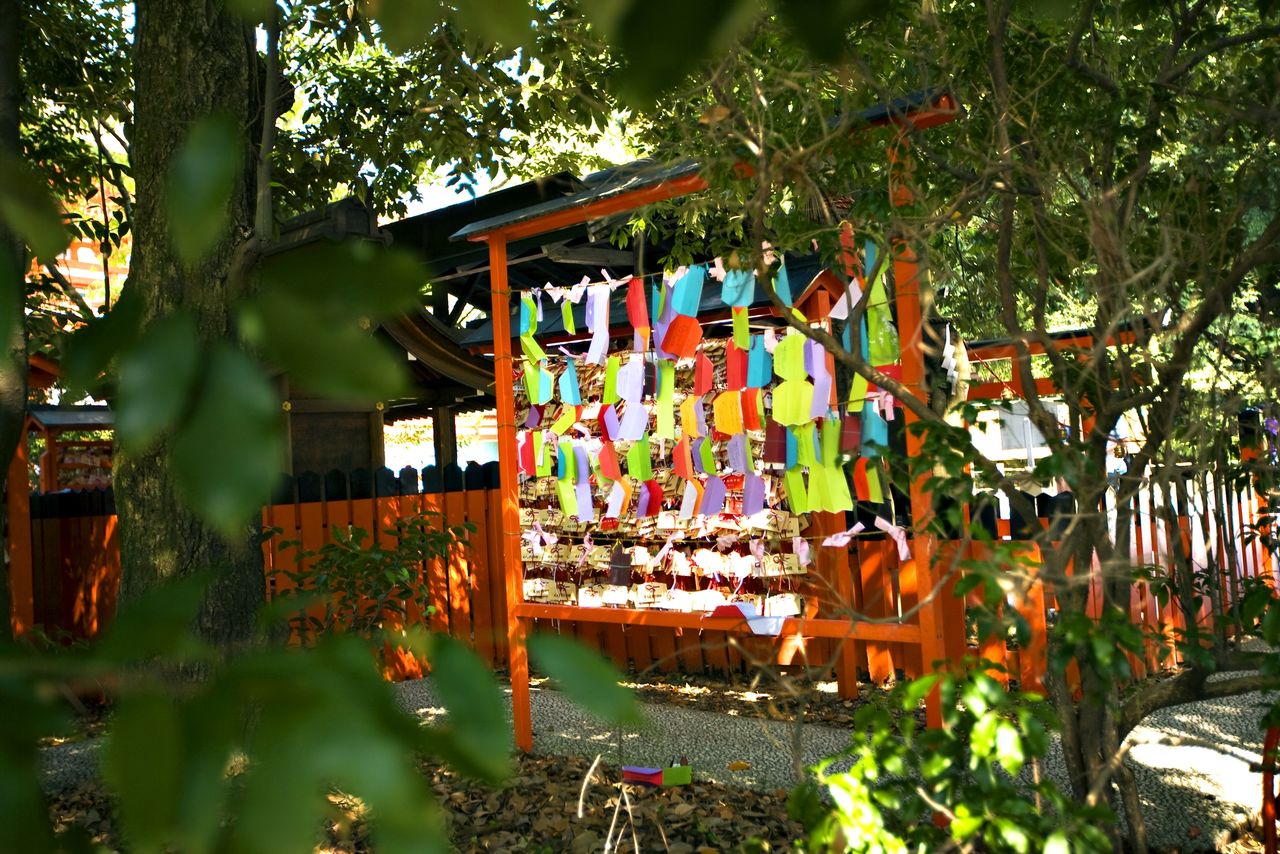
The many items for sale at shrine offices include woven cords with the futaba-aoi motif and popular fortune-telling slips bought by people hoping to find a partner. These slips have such a long history that they are mentioned in the eleventh century Tale of Genji. (© Pixta)
Kawai Shrine

This shrine was the childhood home of Kamo no Chōmei, author of the 1212 Hōjōki (trans. An Account of My Hut), one of Japan’s three great collections of literary jottings. (© Edit Plus)
Kawai Shrine is the southernmost auxiliary shrine in the complex. The deity enshrined here is the mother of Emperor Jinmu, who was reputed to be a great beauty. She is revered as the protector of women, watching over beauty, safe childbirth, child-rearing, and marriage.
Ema votive tablets shaped like hand mirrors hang at this shrine. Purchasers of the tablets draw a picture of a made-up face on the front and write their wish on the back, which will supposedly improve their looks. The rice that comes with the purchase of a tablet, when cooked with ordinary rice, also promises beauty both physical and spiritual.
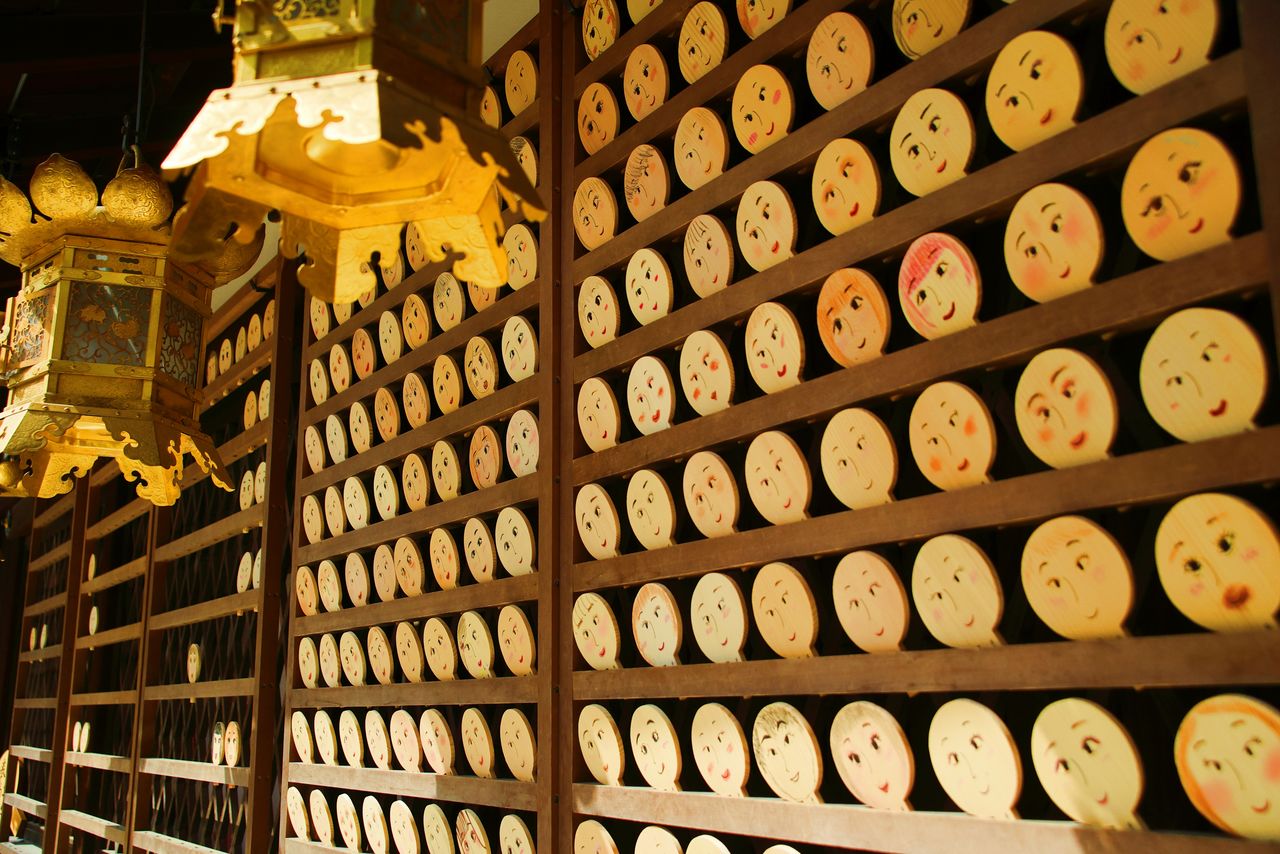
Women can draw faces on the hand mirror-shaped ema in a room set aside for that purpose. (© Edit Plus)
The Tadasu no Mori Forest
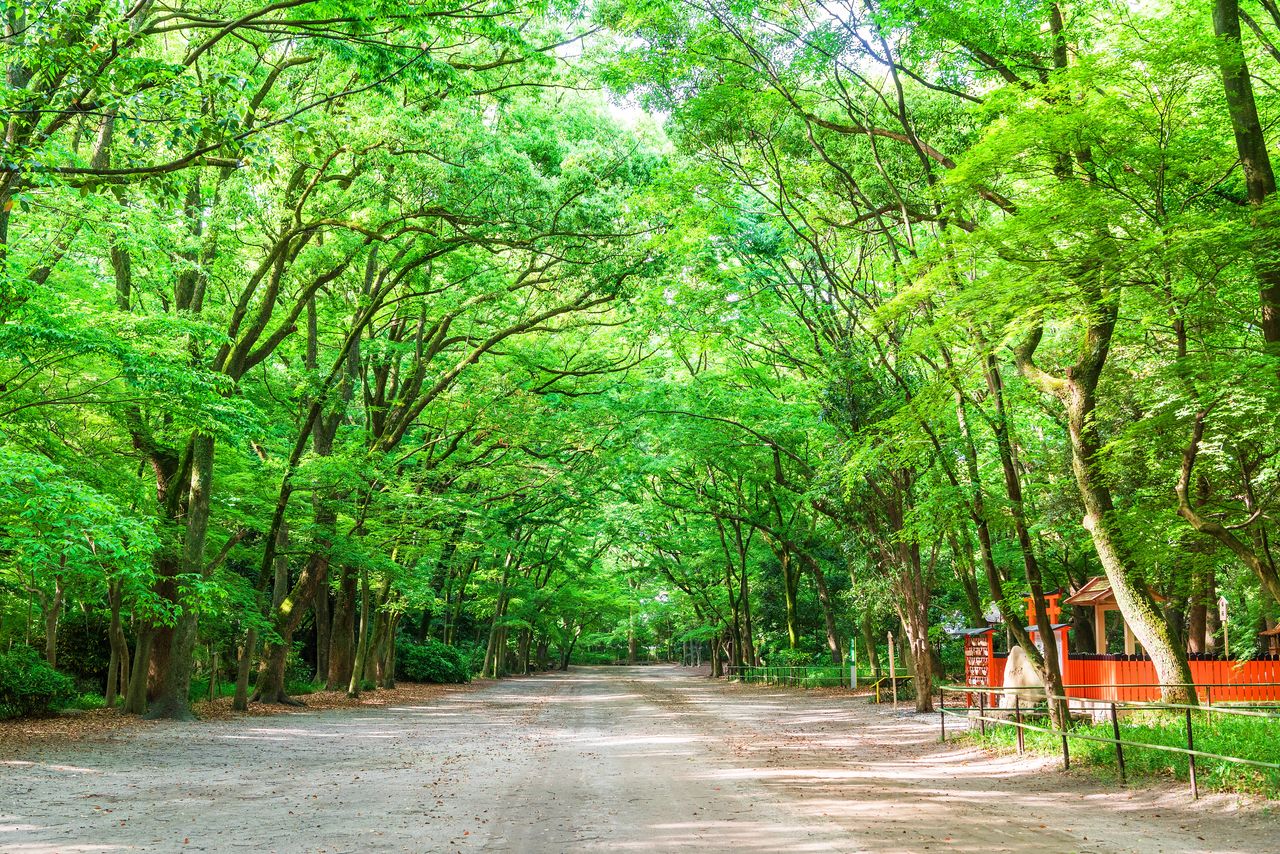
Tadasu no Mori is home mainly to deciduous species like elms and zelkovas. Due to the effects of climate change, though, more oaks and other evergreens are growing there now. (© Pixta)
Tadasu no Mori, the “forest of justice,” with some trees over 600 years old, covers most of the shrine precincts and is one huge power spot. The vegetation, which includes zelkovas and Chinese hackberry trees, has remained virtually unchanged since the Jōmon period. The forest is also a habitat for wild birds, mainly ducks, and insects including critically endangered beetle species.
The forest has long attracted literary figures. The Tale of Genji includes a scene where Genji, leaving the imperial capital on his way to exile after an unfounded accusation, composes a poem expressing his hope that the forest will see that the injustice is undone. Eleventh-century poet and essayist Kamo no Chōmei, son of a Kawai Shrine priest and author of Hōjōki, celebrated the limpid waters of a stream running through the forest in his works. The tranquil ambience of this beautiful forest offers calm and inspiration to all who visit.

In early June, a gathering takes place to view fireflies released in this stream. (© Edit Plus)
Take a Tea Break at Saruya
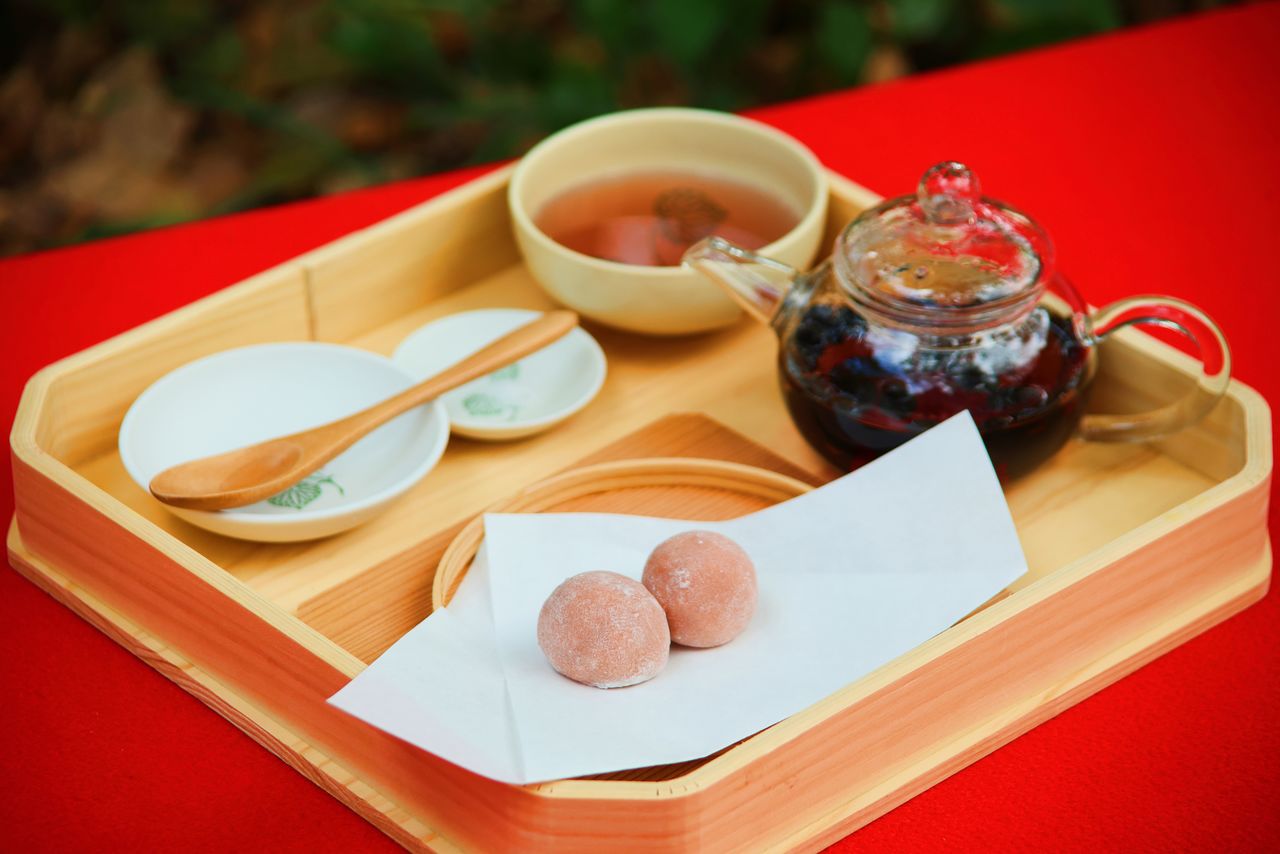
Sarumochi and black soybean tea. After drinking the tea, patrons can place the beans on a saucer and enjoy them with a sprinkling of salt. (© Edit Plus)
The Saruya tea house is ideal for taking a break and enjoying seasonal scenery along with refreshments. The tea house’s best-known sweet is the sarumochi dumpling, a confection consisting of a bean paste filling in a soft pink skin emulating the orange-pink skies of daybreak. The bean paste is made from soybeans grown in the Tanba region, which was once domain land of the shrine, and the covering’s color comes from these beans too. Until recent times, sarumochi was presented to the imperial messenger visiting the shrine a few days before the start of the Aoi Matsuri.
The refreshingly plain tea is the perfect accompaniment for sarumochi. This beverage, also made from Tanba black soybeans, was originally for the shrine priests to drink before religious ceremonies and was reputed to have medicinal properties.
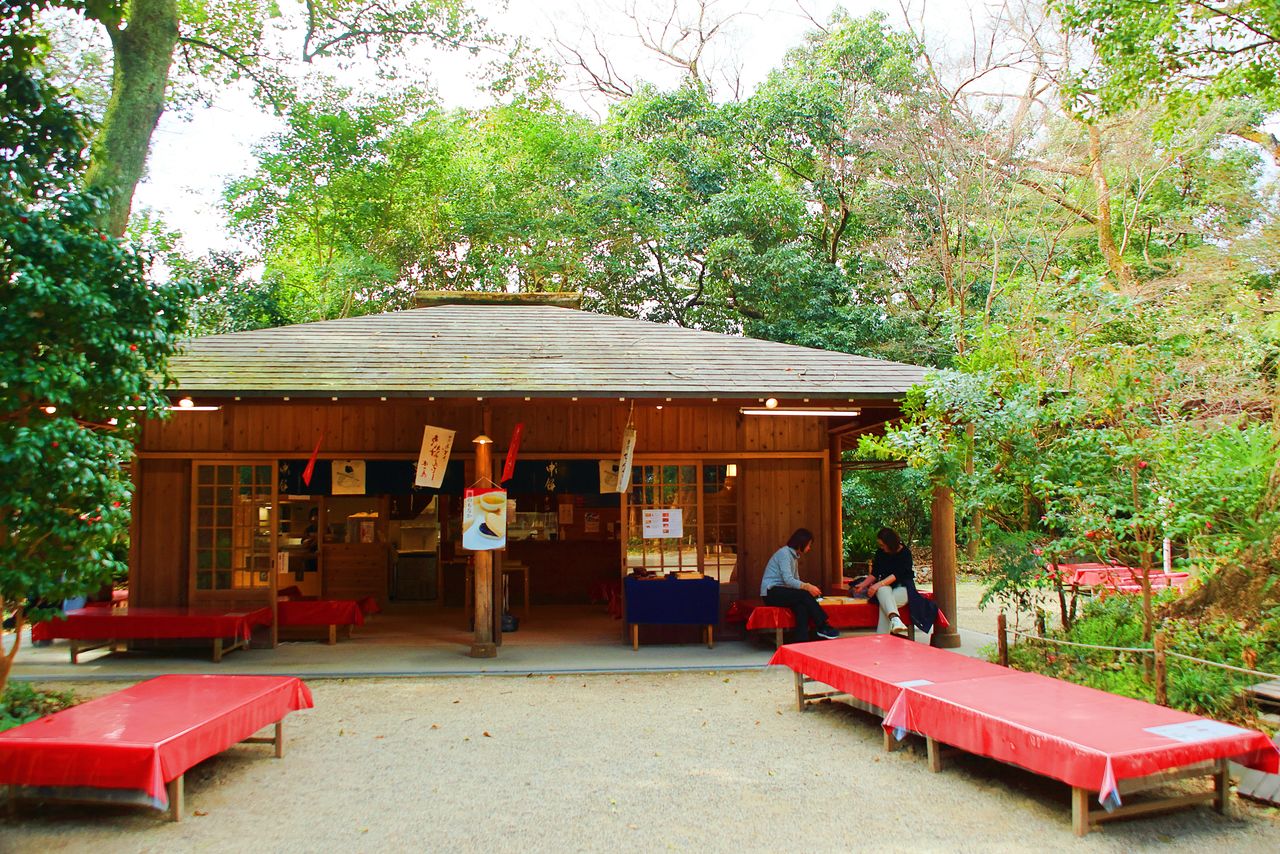
Saruya’s famous sweets and tea are also available for takeout or purchase as souvenirs. (© Edit Plus)
Shimogamo Jinja
- Address: 59 Shimogamo Izumigawachō, Sakyō-ku, Kyoto
- Hours: 6:30 am to 5:00 pm (10:00 am to 4:00 pm for special viewings); Saruya tea room: 10:00 am to 4:30 pm
- Fee: Free of charge (¥500 for a ticket for special viewings of Ōidono, Okurumaya, and Kawai Jinja)
- Access: From JR Kyoto Station, take the number 4 Kyoto City Bus bound for Nishigamo Shakomae and get off at the Shimogamo Jinja stop adjacent to the shrine.
(Translated from Japanese. Reporting, text, and photos by Edit Plus.)